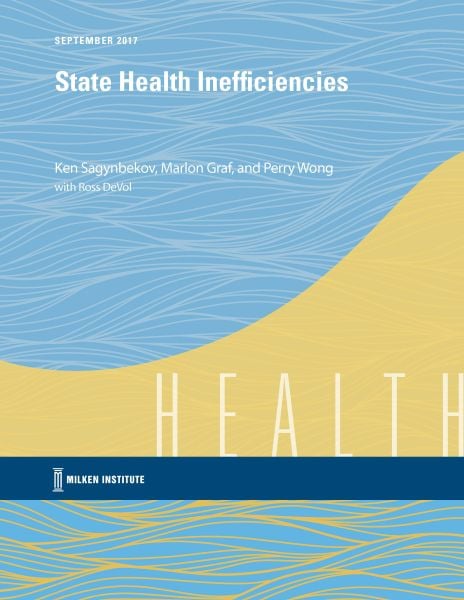
State Health Inefficiencies
Despite spending more than any other country on health, the U.S. has a mediocre ranking across most health care quality and health outcome indicators. According to a report published in 2012 by the Institute of Medicine, the U.S. wastes roughly one-third of health expenditures - $750 billion annually - on unnecessary medical services, costly paperwork, fraud, and poor quality services.
There are numerous studies that compare the U.S. health care system to other countries, but the existence of various country-specific factors undermines such comparisons’s validity. In this study, we therefore compare U.S states to draw meaningful policy conclusions. Our analysis contributes to the understanding of health care inefficiencies in the U.S. in three important ways:
- We rank states according to their health care system efficiency scores, which we estimate using a Bayesian Stochastic Frontier Model that takes into account states’ abilities to convert their health care resources into reductions in deaths amenable to health care interventions.
- We carry out a quasi-counterfactual exercise, where we estimate what the health care cost savings would be if each state were to operate at the efficiency level of Wyoming, our top-ranked state. The results of this exercise indicate that, on average, states can reduce the cost of health care by 38% with their existing resources, which is equivalent to $1.2 trillion annually at a national scale.
- We compare the ten most efficient states to the ten least efficient states across eleven key health policy indicators commonly associated with health care inefficiencies and waste both in policy debates and academic literature. We find that more efficient states have fewer uninsured individuals, less wasteful spending, better quality services, and greater reliance on community social workers to bridge the gap between clinicians and patients.


